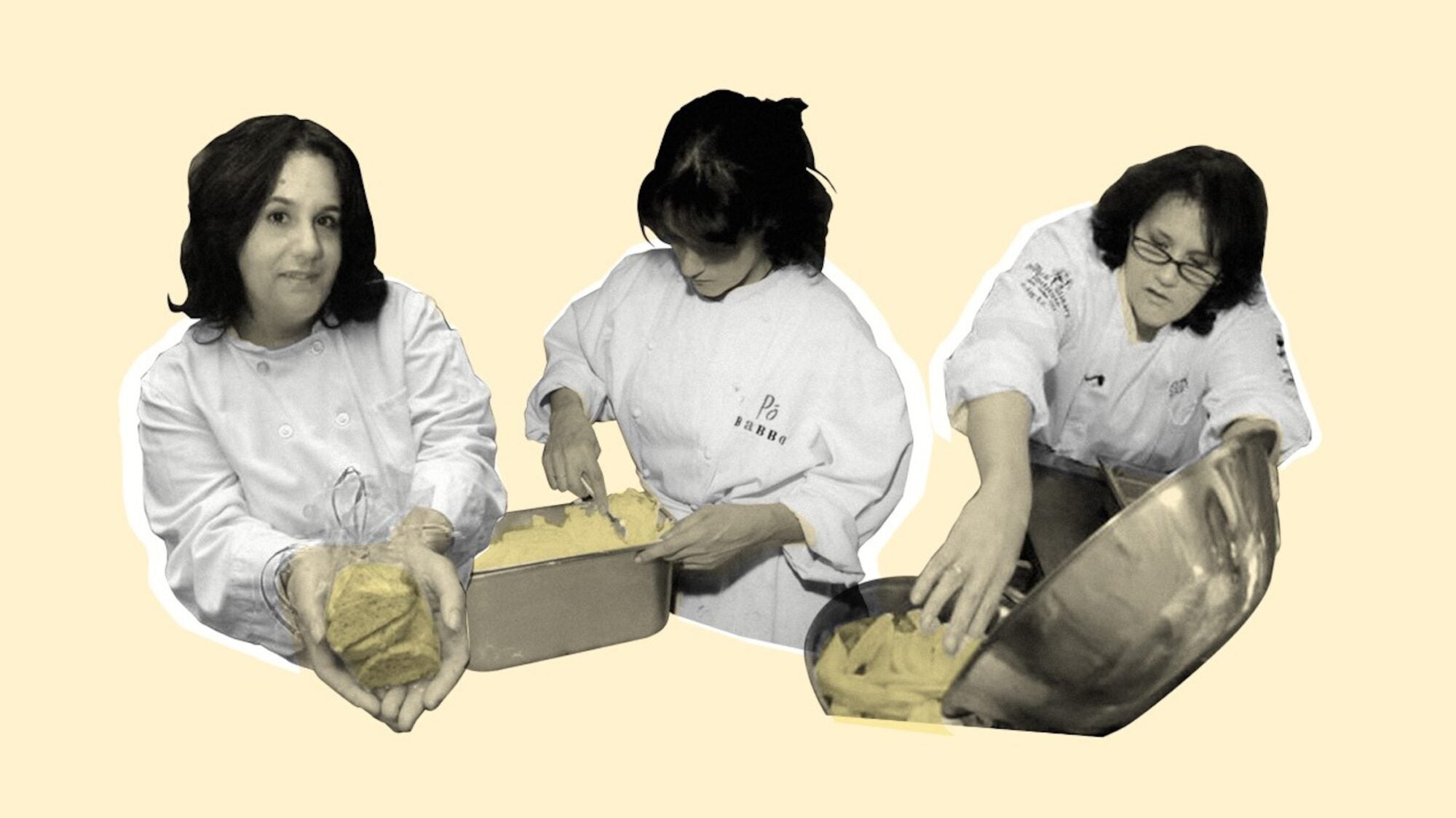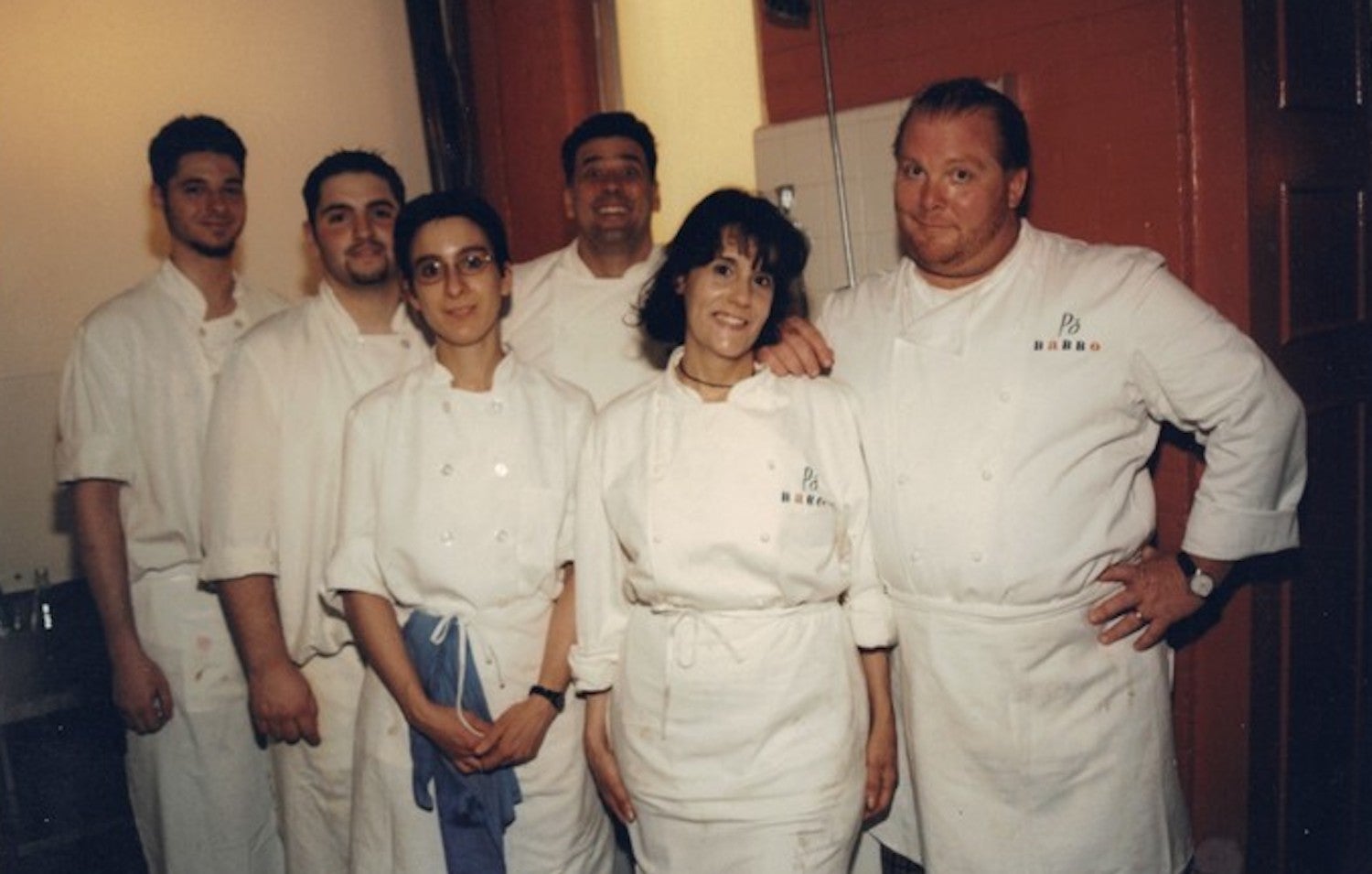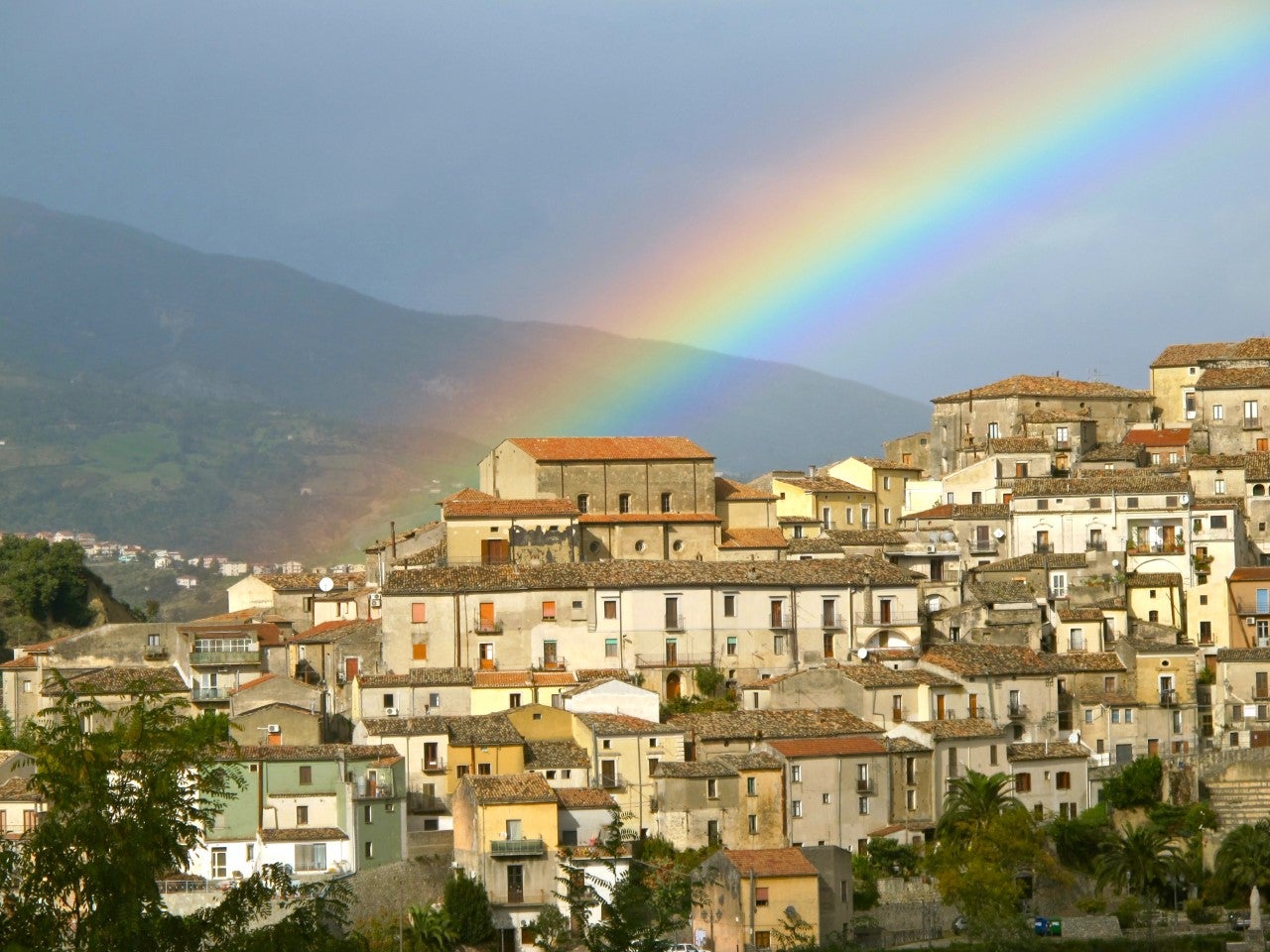
When longtime Babbo chef Gina DePalma died unexpectedly, what happened to her unpublished master work?
Gina DePalma—the legendary James Beard Award–winning chef and celebrated author—wrote one of the most authoritative recipe collections ever dedicated to Italian pastry, a richly researched cookbook that remains, mysteriously, unpublished. To this day, the book’s curious disappearance is one of the great tragedies in the publishing world. Her lost work, entitled “My Sweet Italy,” would’ve further blazed the trail she’d forged with her highly acclaimed Dolce Italiano, published in 2007. After a long battle with ovarian cancer, DePalma died in 2015 at age 49. She left her legacy in this paean to Italian desserts, a treasure trove of regional recipes and travel essays. The unpublished manuscript is a cherished artifact of a storied career that influenced an entire generation of pastry chefs.
When a former colleague discreetly shared DePalma’s manuscript with me a few years ago, I couldn’t bring myself to open the Word document right away. As her coworker and friend for more than ten years—including while she was stricken with cancer—I knew how much heart and soul she had poured into finishing the book. I never imagined I’d see it in its finished form. When I finally built up the courage to read the manuscript, I was filled with a deep sorrow, mourning her brilliance as not only a chef but an author, whose seminal work had been unjustly denied to a generation of literate cooks and bakers.
After the success of Dolce Italiano, DePalma’s publisher, W. W. Norton, believed that a follow-up had sales potential, given her prominence as the executive pastry chef of Mario Batali’s Babbo. In late 2007, she took a sabbatical from the acclaimed Greenwich Village enoteca to live in Italy and research her next book. What would transpire is a story of discovery and loss. Her journey would take her to the most remote corners of Italy, including the very street in Calabria where her great-grandparents once lived. “Everything I had experienced as a child came together and crystallized into a single moment of self-realization,” Gina writes in the book’s introduction about looking up at the window of her family home in Carolei. “I truly understood the person I am, and how the place I came from has shaped the course of my life.”
Mario Batali wrote the foreword to her first cookbook, and his name screams across the cover in bold red lettering, garishly upstaging hers. DePalma confided in many friends at the time, including me, that she hated the jacket design and was growing weary of living in her boss’s enormous shadow. She felt her achievements were easily dismissed because of their association and resented being seen as Batali’s sweet tooth. Even though she was fiercely loyal, DePalma always marched to the beat of her own stand mixer, which made her relationship with the disgraced chef contentious at times.
Gina DePalma was raised in Fairfax, Virginia, the youngest daughter of Southern Italian immigrants. Although Italian was her family’s native tongue, DePalma never learned to speak it, despite somehow fluently understanding her mother’s Calabrian dialect. Like so many Italian Americans, she was raised with a love for Italian food through a lifetime of family gatherings: Sunday gravies, fish roasted oreganata-style, homemade Easter bread, and steaming bowls of her mother’s pasta e fagioli. Her grandparents would make regular visits from New York City with boxes full of Italian specialties like hulking soppressata, crusty Italian bread, and wedges of Parmigiano-Reggiano. In the introduction to “My Sweet Italy,” she describes her Italian-American identity intuitively. “In the ways we ate and shopped, the manner in which our household hummed, and through all of our family gatherings and celebrations, we lived a life that often felt more Italian than American.”
“My Sweet Italy” was conceived of as a hybrid cookbook and culinary tour that would highlight the regionality of Italy’s great pastry traditions. DePalma’s nuanced approach stood in stark contrast to the Food Network–dominated cookbook publishing world at the time. In June of 2008, while taking up residency in Rome, DePalma began experiencing debilitating pain in her abdomen and was forced to travel back to New York City prematurely. She assumed it was stress-induced, perhaps an ulcer. Within days of returning home, she was diagnosed with ovarian cancer, and she quickly began treatment.
DePalma always marched to the beat of her own stand mixer
Throughout her seven-year battle with cancer, DePalma continued working feverishly on “My Sweet Italy.” “The second book was nearer and dearer to Gina’s heart,” DePalma’s sister, Maria DePalma-Cocozza, recalls of the project. Her editor, the late Maria Guarnaschelli, may have demanded more than Gina was capable of delivering in her weakened state. Guarnaschelli insisted DePalma downplay the travel element of the book. Though it was long past her assigned deadline, Gina submitted her finished manuscript in March 2013 with more than one hundred recipes. The editorial team at Norton, seemingly at odds with her vision, decided to shelve the project with little explanation. “I think the publisher wanted a straight cookie-cutter cookbook, and Gina didn’t want to do it,” her sister remembers. “She told me, flat out, ‘Fuck them, I’m not changing it.’”
Laurie Woolever worked alongside DePalma from when Babbo opened in 1998 through 2001, before becoming Anthony Bourdain’s personal assistant and the coauthor of his Appetites cookbook and his upcoming oral biography. According to Woolever, Bourdain was an ardent admirer of DePalma and championed her manuscript with his own publishing partners after her death, in an attempt to revive interest in it after Norton balked at releasing the book.
“Tony recognized that Gina was extraordinarily talented and wanted to support her,” Woolever says. “He met thousands of people, but Gina definitely made a big impression on him.” Ultimately, Bourdain’s publishers passed on “My Sweet Italy.” Despite recognizing its brilliance, marketing a book without an author was a challenge they weren’t willing to undertake.
“Gina was so good at developing recipes,” Woolever says. “She was also a really great teacher. Whether it was through her writing or in person, she was very good at communicating technique, and she seemed to truly enjoy it. That was a time you could really see her soften, when she had an opportunity to teach someone something.”
DePalma displayed this soft touch at the beginning of Dolce Italiano, imparting an Italian proverb to temper her readers’ expectations of themselves. The saying roughly translates to “perfect is the enemy of good.” Like any great pastry chef, she knew that successful outcomes with dessert recipes require precision, and she was determined to shield her readers from their own shortcomings. In her professional life, however, good was often the enemy of perfect. Babbo was the standard-bearer for Italian restaurants in New York City, a high-stakes environment dominated by men. The name “Babbo” means “daddy” in Italian, and the restaurant had its share of daddy issues. DePalma was adept at mothering her male colleagues when necessary, but she often bore the brunt of their dysfunctional behavior.
“She was her own worst enemy, in a way,” Woolever says of DePalma’s stubborn nature and uncompromising standards. “If she had a little more ability to rein in her emotional responses to things, she would’ve gotten more of the respect that she desperately deserved and craved. But it was not an environment where being outwardly emotional was rewarded.”
Though she was gravely ill, DePalma went on working at Babbo through the relentless chemotherapy regimens. During periods of remission, she kept writing whenever she could muster the strength. Completing the book became a touchstone for recovery. When her cancer diagnosis came, she continued to file dispatches for a column she started in Rome called “Seriously Italian” for the website Serious Eats.
In many ways, “My Sweet Italy” represents DePalma’s own personal journey. She chronicles countless culinary epiphanies, like the moment she realizes that the Italian affinity for fresh fruit as dessert wasn’t only her mother’s obsession. She begrudgingly admits she was wrong to condemn her mother’s devotion to the beloved macedonia di frutta, the Italian equivalent of an American fruit salad often spiked with moscato wine or grappa, which she always dreaded as a child. “We always had fruit with dinner,” her mother tells DePalma triumphantly in the book. Then her mother pauses with a smile. “I have some fruit salad in the fridge right now. Do you want a cup?” “Maybe that’s why I became a pastry chef,” she writes, “as an involuntary response to all those cups of fruit salad.”
DePalma delves into the role pastry plays in the numerous sagre, or festivals, that take place throughout the year in Italy. We learn of the many martyred patron saints, and the delicate pastries Italians prepare to pay homage to them. This includes brigidini, Pringles-thin wafers kissed with anise, baked in honor of the Swedish nun Santa Brigida, who, according to legend, accidentally spilled sugar into the batter of a batch of communion wafers. Not wanting to commit the sin of being wasteful, she baked the batter anyway.
There’s also Sant’Agata, the patron saint of Catania in Sicily, whose breasts were cut off after she refused the marriage proposal of a wealthy Roman prefect. Italians celebrate her in pastry form with minne di Sant’Agata, little mounds of marzipan and custard topped with a cherry “nipple” to resemble the saint’s severed bosom. One wonders if the stories of these martyred saints of pastry resonated more with DePalma’s own sense of martyrdom as she struggled to endure the toxic masculinity inside the Babbo kitchen and the restaurant industry as a whole. In Gina’s universe, strong women were at the heart of all great Italian recipes.
“My Sweet Italy” goes beyond cooking and traveling, which is what makes it so compelling for readers. The book never made it to the photography and illustration phase, but, even as a raw digital manuscript, it hardly needs splashy visuals. DePalma paints a canvas filled with colorful vignettes that document her many Italian travails. She dedicates one joyful essay to the simple yet perilous act of crossing the street in Rome. Tourists should follow Italian men in fancy leather shoes or stealthily shadow priests in flowing robes to avoid being run down by growling Maseratis and flying Vespas, she explains. She insists that not even the most reckless Italian motorist would dare hit a clergyman.
“For the briefest moment, there was no language barrier, and we understood each other perfectly.”
While researching in Piemonte, she visited Diana Strinati Baur, who owned an inn with her husband in Acqui Terme. The two friends explored the rolling hills of the Monferrato in search of the region’s finest amaretti cookies. “The second book was more about giving the regions their due,” Strinati Baur says. “Gina wanted people to understand what role sweets and desserts play in Italian households all over Italy, not just from the perspective of the restaurant.”
Strinati Baur introduced DePalma to Moriondo Virginio, her favorite fabbrica di amaretti, in the tiny medieval village of Mombaruzzo. These small bakeries are called “factories” because, unlike the ubiquitous pasticceria, they produce only one thing. “The bakers invited us back into the kitchen, where they were wrapping cookies,” Strinati Baur recalls. “Gina looked on the shelf and said, ‘Oh my god, that’s a bottle of armelline!’ which is the oil from the apricot kernels they use in traditional soft amaretti cookies. It’s illegal in the States, and she would always smuggle a bottle back to New York with her.”
DePalma describes the same encounter in a passage attached to her recipe for amaretti morbidi, inspired by that day’s vision. “Baker to baker, she looked into my eyes, and I suddenly felt the jolt of a familiar, happy connection with a kindred soul; one who commands a mixer and oven, day in and day out,” she writes. “For the briefest moment, there was no language barrier, and we understood each other perfectly.”
Though it was never an easy burden to carry, DePalma saw herself as a vessel for perpetuating Italy’s great culinary history. “The recipes and traditions of Italy, sweet or savory,” she writes in the manuscript, “will remain alive for generations to enjoy if they are made, loved, and passed along; it is as simple as that, and I am a happy, persistent evangelist for this message.”
To honor DePalma’s mission, we’re sharing several unpublished recipes from “My Sweet Italy” for the first time. With permission from her family, we’ve also included original photographs that DePalma captured herself both during her Italian travels and while recipe testing the book. As amateur cooks and pastry enthusiasts, we owe it to her memory to lovingly prepare these desserts in our own home kitchens. Gina reminds us in “My Sweet Italy” that, for Italians, patron saints are our advocates in heaven. Keeping her recipes alive in our ovens, exactly as she would’ve wanted, is a solemn but profound way we can continue to pay tribute to Santa Gina, the patron saint of the most divine Italian desserts.
3 RECIPES FROM GINA DEPALMA’S UNPUBLISHED COOKBOOK
Fig Budino
“Twenty years ago, an obliging friend with a backyard fig tree was the only source I could find. This warm, spiced hybrid of cake and pudding features fresh figs bathed in warm honey and cinnamon, cooked just until they are soft and tender.”
Amaretti Morbidi
“The almond macaroons known as amaretti are undoubtedly the iconic sweet of Italy, made and enjoyed in every region, with versions that can be hyperlocal from town to town, or even household to household. This is a hybrid of favorites I’ve sampled over the years. Pure almond paste provides a soft, chewy center.”
Orange Cake “Sottosopra”
“‘Sottosopra’ literally translates to ‘under-over,’ and this cake is my way of giving the American classic traditionally made with pineapple a sunny citrus twist. Oranges are available year-round, but the peak season from autumn to early winter is always the best time to find more uncommon varieties available at the market.”

